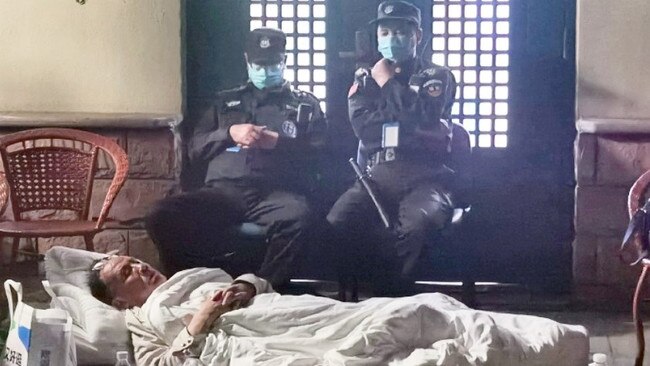Chinese scientist who published Covid sequence ‘evicted from lab’
Zhang Yongzhen is staging a sit-in after a long-running dispute with the health authorities since he shared the sequence without going through state channels

The Chinese scientist who first traced and published the genome of the Covid-19 virus is staging a protest outside his laboratory in Shanghai after officials ordered its closure.
Zhang Yongzhen, an internationally recognised virologist, has been in an on-off dispute with the public health authorities since he authorised publication of the sequence online without going through official state channels.
He claims that the decision to close his laboratory “with experiments unfinished” was taken after a one-minute discussion at an emergency meeting last Thursday. He was then given two days to clear the premises.
After being prevented from entering the building on Sunday, he has set up a makeshift bed outside, where he is being monitored by security guards.
The teaching hospital to which his laboratory is attached, the Shanghai Public Health Clinical Centre, says the lab was shut for construction work and that Dr Zhang will be offered alternative facilities. “Our hospital always respects scientific researchers and supports them to carry out normal research work,” it said.
However, in a long post on Chinese social media – later deleted – Dr Zhang said he had not been informed of any alternative facilities and one of his assistants had been reassigned to another professor. In a subsequent comment online, also deleted, he added: “Never quit, never give up, just pursue science and the truth.”
Dr Zhang gained publicity along with other Chinese virus specialists after the coronavirus outbreak in Wuhan in late 2019. He was one of several researchers to warn early on of the dangers of the virus, even as the authorities attempted to limit news of its spread. The central government later blamed the cover-up on local officials but leading scientists have continued to face difficulties.
He was sent swabs from a Wuhan patient suffering from a novel form of pneumonia on January 3, 2020. He worked through the next two nights to determine the gene sequence, immediately realising the pathogen was closely related to the SARS virus that caused panic around the world in 2003.
He later said he spoke in person to the head of respiratory disease at Wuhan central hospital and to senior government public health officials to advise an emergency public health response.
He also posted the sequence to the US National Centre for Biotechnology Information, a science and health advisory service, and when it was apparently not noticed, authorised an Australian co-researcher, Edward Holmes, to post it online more broadly on January 11.
That alerted experts in other countries and allowed international teams to start work on a vaccine. Controversy over China’s initial cover-up was renewed last week when an investigative report by Associated Press revealed private correspondence sent by Dr Zhang at the time.
THE TIMES



To join the conversation, please log in. Don't have an account? Register
Join the conversation, you are commenting as Logout